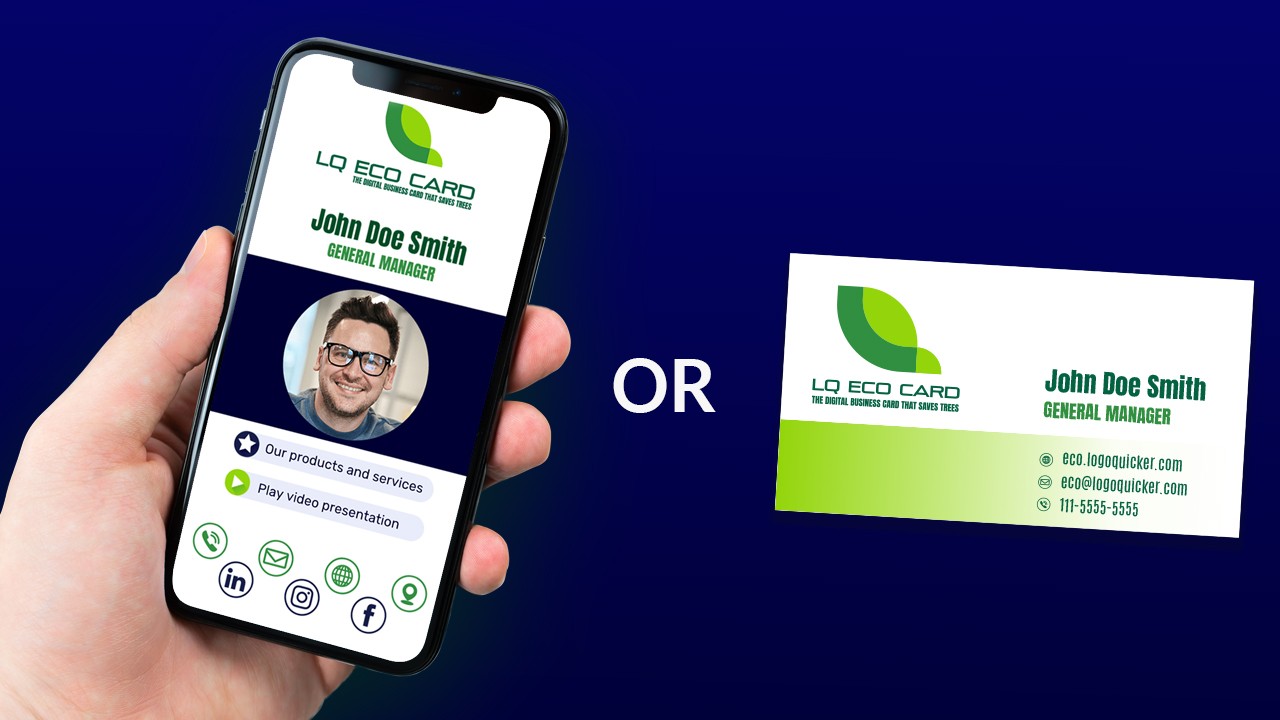
Introduction:
In today’s digital-first world, the humble paper business card is facing stiff competition from its virtual counterpart. Digital business cards are redefining how professionals connect, offering a smarter, more efficient, and eco-friendly way to share contact information. If you haven’t yet embraced this modern networking tool, now is the time. In this blog, we’ll explore the advantages of digital business cards, guide you through the process of creating one, and share tips to help you use them effectively.
1. The Rise of Digital Business Cards
Digital business cards are electronic versions of traditional paper cards. They can be shared instantly through email, SMS, or QR codes and often include interactive features such as clickable links, multimedia, and real-time updates. Unlike paper cards, which can quickly become outdated, digital cards offer flexibility and a wealth of functionalities.
2. Key Benefits of Digital Business Cards
Environmental Impact: One of the most compelling reasons to switch to digital business cards is their positive impact on the environment. By reducing the need for paper, you’re contributing to a decrease in waste and a more sustainable future.
Cost-Effectiveness: Digital cards eliminate the costs associated with printing and reprinting. Once you’ve designed your card, you can make updates at no additional cost, saving money in the long run.
Enhanced Interactivity: Digital cards offer features that traditional paper cards cannot. You can include clickable links to your website, social media profiles, or portfolios, and even embed videos or presentations to make a stronger impression.
Instant Updates: Need to change your job title or update your contact details? Digital business cards allow you to make updates in real-time, ensuring that your network always has your most current information.
Convenient Sharing: Share your card effortlessly via email, SMS, or QR codes. This convenience makes it easy for recipients to save your contact details and access them anytime.
3. How to Create a Digital Business Card
Choose the Right Platform: There are several digital business card platforms available, including HiHello, CamCard, and L-Card. Research and select a platform that offers the features you need and is user-friendly.
Design Your Card: Customize your digital card to reflect your personal or professional brand. Use your logo, brand colors, and fonts to create a cohesive and visually appealing design.
Include Essential Information: Ensure your card includes your name, job title, company, contact information, and links to your website and social media profiles. Adding a professional photo or a brief bio can also enhance your card’s impact.
Test for Compatibility: Before sharing your card, test it on various devices to ensure it displays correctly and all interactive elements work as intended. Make any necessary adjustments to ensure a seamless user experience.
4. Best Practices for Using Digital Business Cards
Keep Your Information Current: Regularly update your digital card to reflect any changes in your contact information or professional details. This helps maintain your credibility and ensures your network has the most accurate information.
Personalize for Different Audiences: Tailor your card’s content for different audiences or networking contexts. For example, you might emphasize different skills or experiences depending on the industry or interest of the recipient.
Leverage Analytics: Many digital business card platforms offer analytics features. Use these tools to track how often your card is viewed and interacted with, gaining insights into your networking effectiveness.
Follow Up After Sharing: After sending your digital card, follow up with a personalized email or message. Reference your interaction to reinforce the connection and keep the conversation going.
5. Emerging Trends in Digital Business Cards
Integration with CRM Systems: Digital business cards are increasingly integrating with customer relationship management (CRM) systems, allowing for better management and tracking of your networking connections.
Augmented Reality (AR): AR technology is making its way into digital business cards, offering interactive and immersive experiences that captivate and engage recipients.
Blockchain for Security: Blockchain technology is being explored to enhance the security and authenticity of digital business cards, preventing fraud and ensuring data integrity.
6. Conclusion
Digital business cards are transforming the way professionals network and connect. With their environmental benefits, cost savings, and advanced features, they provide a modern and efficient alternative to traditional paper cards. By adopting digital business cards, you can streamline your networking efforts and make a lasting impression in the digital age.